Scales can be a helpful adaptation for many animals, and they can vary significantly in size, shape, texture, color, and even function. When most of us think of animals with scales, fish, and reptiles tend to come to mind. But many other animals, like armadillos and even certain worms, also possess scales. Read on to explore 12 unique animals with scales, many of which you might not expect to see on this list!
1. Snakes

Snake scales are essential both for protection and movement.
©Audrey Snider-Bell/Shutterstock.com
We’ll begin our list with probably the first animal many people think of when they think of scales: snakes! Though snake scales look and seem rather simple as far as their overall purpose, their structure and function are more complex than you might imagine.
The skin of a snake is made up of many small, thin yet firm individual plates known as scales. These scales are just folded pieces of their epidermis and dermis–skin, essentially. The primary purpose of these scales is for protection, as they can help keep the snake’s body safe while slithering along trees, rocky substrate, and even in water.
But scales are also vital to a snake’s locomotion, or movement. These many scales stretch, contract, and fold as a snake slithers, aiding in movement over difficult terrain. Like most reptiles, snakes shed these scales periodically, often in one large piece rather than in a patchwork-like manner like lizards.
2. Lizards
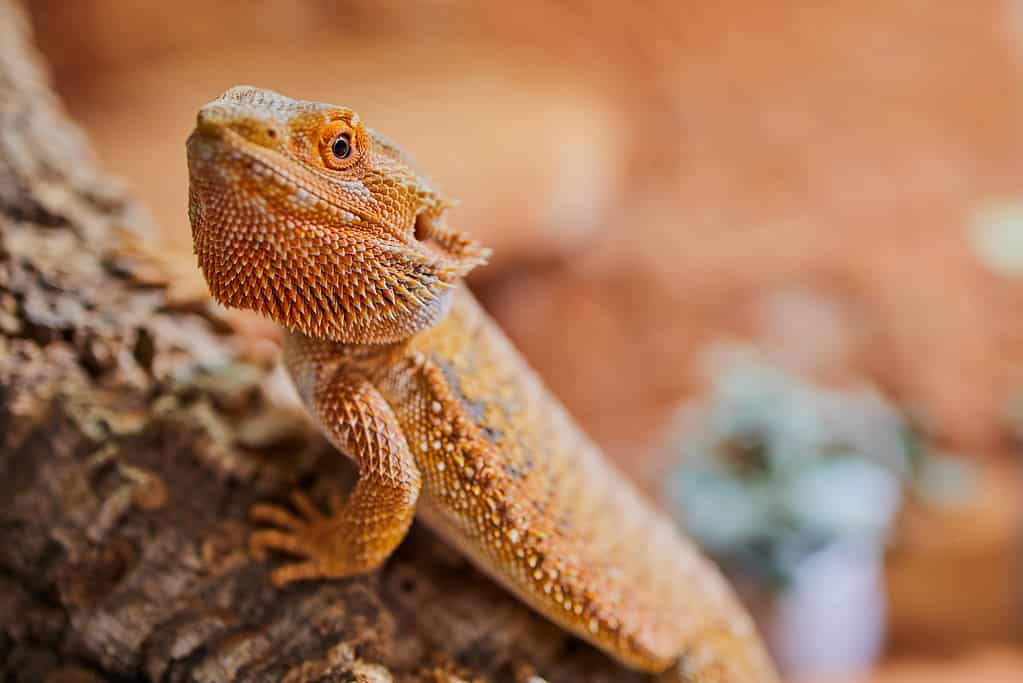
The scales of a bearded dragon have a spike-like structure.
©Claudia Nass/iStock / Getty Images Plus via Getty Images
Another animal most of us imagine when scales come to mind is the lizard, of which there are more than 7,000 unique species! Scales are important for the survival of lizards. This is because they protect against the elements and terrain similar to those of a snake.
The scales of a bearded dragon or horned lizard, for instance, have a pointed, spike-like structure, which can help protect them from predators that don’t want to bother chewing through painful spikes for their next meal. Alternatively, the scales of a frilled lizard can be used in defensive displays, where the lizard flares its neck frill out to make itself appear larger and more intimidating.
Additionally, the scales of a lizard can be helpful for camouflage. Consider the scales of a chameleon, for instance, which have layers of pigments that can change depending on the lizard’s environment.
3. Turtles
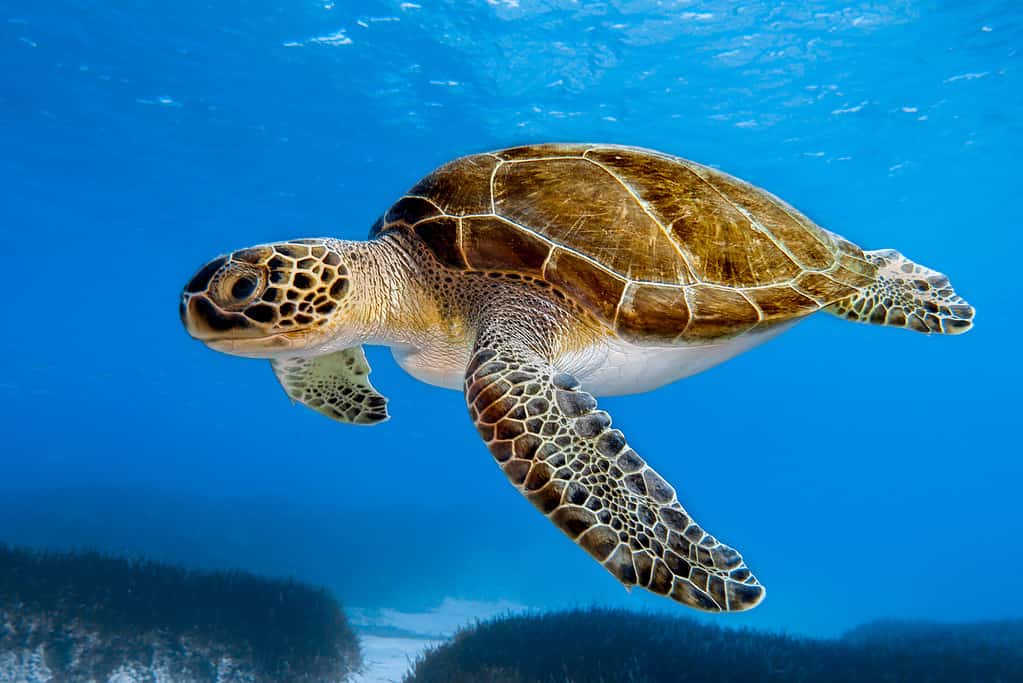
Sea turtles have very large, irregularly shaped scales.
©Sakis Lazarides/ via Getty Images
Like most reptiles, turtles also have scales that can vary widely in shape, color, and even function. The scales on the legs of the gopher tortoise, for example, are very large, rugged, and pointed in many spots to help with the digging of large, expansive burrows.
Turtle scales can also be very large and irregularly shaped, like those of most sea turtles. The scales of a green sea turtle are very prominently displayed and can be brown, greenish, or even yellowish. However, one species, the leatherback sea turtle, is an outlier, as it lacks scales entirely and has a completely smooth shell and skin.
Other turtle scales, like those of the red-eared slider, can be very vibrant reds, oranges, yellows, and greens. These can help identify species from one another, as most turtles have very distinct scalation.
4. Tuataras
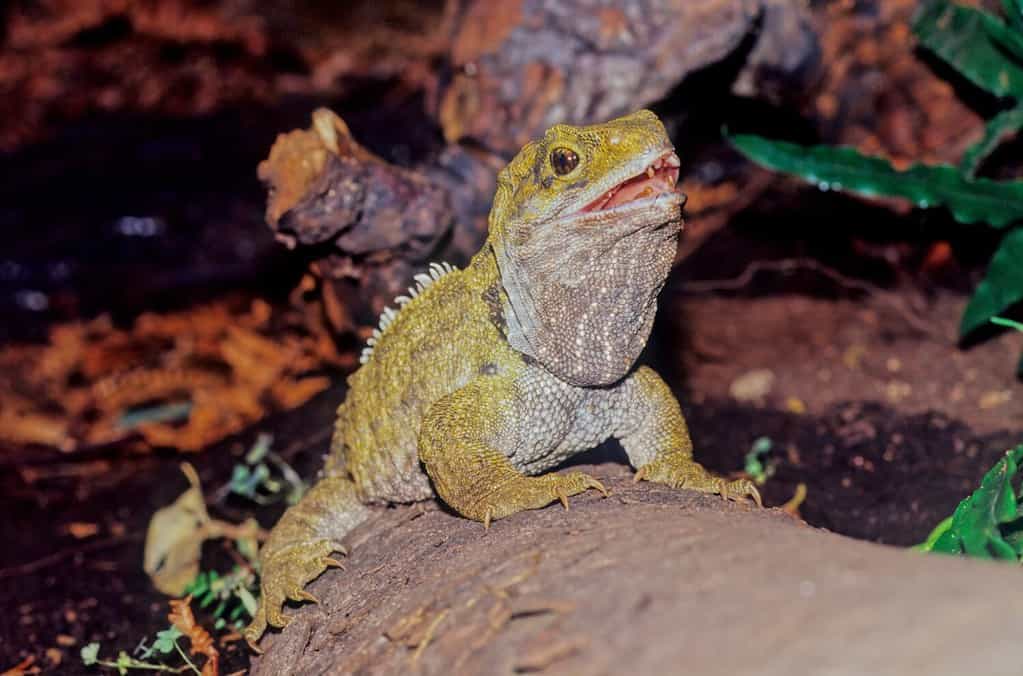
Although they resemble iguanas, tuataras are quite different from lizards.
©Roberto Dani/Shutterstock.com
The tuatara is an incredibly unique reptile. Despite its iguana-like appearance, it is taxonomically distinct from lizards! Bizarrely, they thrive in cooler weather, unlike most other reptiles. Additionally, they are nocturnal and lack external ears.
The scales of a tuatara also vary in size and shape. Firm yet flexible spines are present on the tuatara’s neck, which form a crest atop the head and extend down the back and tail. The tail of a tuatara is large, bulky, and almost paddle-like. Meanwhile, the scales underneath the animal’s chin and belly are small, smooth, and round, like those of a lizard.
5. Armadillos

Most armadillos’ bodies are covered from nose to tail in large, plate-like scales.
©guentermanaus/Shutterstock.com
Next, we’ll move away from reptiles to discuss some animals you might not expect to have scales! The armadillo’s body is covered in large, semi-flexible yet plate-like scales. These scales form a protective layer known as a carapace, a bit like that of a lobster or crab.
Most species of armadillos have scales that cover the head, body, and even most of the tail. They are essential for protection and make up the animal’s primary defense mechanism, as most predators aren’t going to bother chomping into armor-clad prey.
Still, certain species of animals are daring and strong enough to feed on armadillos, such as the alligator, which we’ll also touch on below.
6. Pangolins

Pangolins have a very heightened sense of smell which assists them in hunting for insects.
©Vickey Chauhan/Shutterstock.com
Up next is the pangolin, which resembles but is not very closely related to the armadillo we just covered. Pangolins’ bodies are covered in very large, round, or roughly diamond-shaped scales from head to toe. They’re the only mammals whose bodies are entirely covered in these scales!
Like the armadillo, pangolins rely on their tough, plate-like, keratinous scales for protection. They can roll their bodies into tight balls, essentially turning themselves into armored balls when in the presence of a potential predator. In addition to their armored bodies, they also boast strong, pointed, sharp-scaled tails that they can use to whip their aggressors.
7. Caecilians
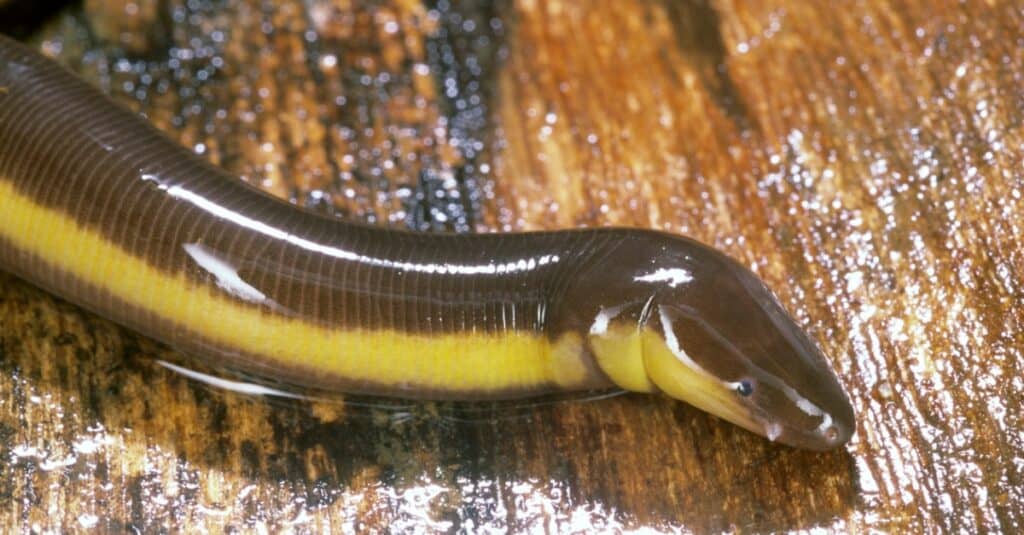
Caecilians are not worms but rather amphibians, making them closely related to frogs.
©RealityImages/Shutterstock.com
Perhaps one of the most bizarre and alien-like animals on this list is the caecilian. Although they look just like worms, they’re not related to worms at all. They are more closely related to frogs and salamanders, as they are amphibians!
Although the skin of a caecilian appears very wet and slimy, it’s very smooth and made up of folds of skin called annuli. Within these annuli are very tiny scales that are similar to those of fish. Caecilians can vary widely in size and color, though they typically have a vermiform–or worm-like–body shape.
8. Crocodilians

Crocodiles are one of the only animals brave and strong enough to prey upon armadillos, another scaly animal on this list.
©Naypong Studio/Shutterstock.com
Crocodilians are a rather diverse taxonomic group, as they include not only crocodiles but also alligators, caimans, and gharials. They’re also one of the most primitive reptiles with scales we’ll discuss here.
Crocodile skin consists of many large, interconnected scales. These scales are incredibly tough, and they provide crocodilians with an excellent defense from potential predators. As a result, very few animals prey upon particularly large crocodilians like alligators and crocs. However, some big cats, as well as certain types of sharks occasionally feed on them.
9. Fish
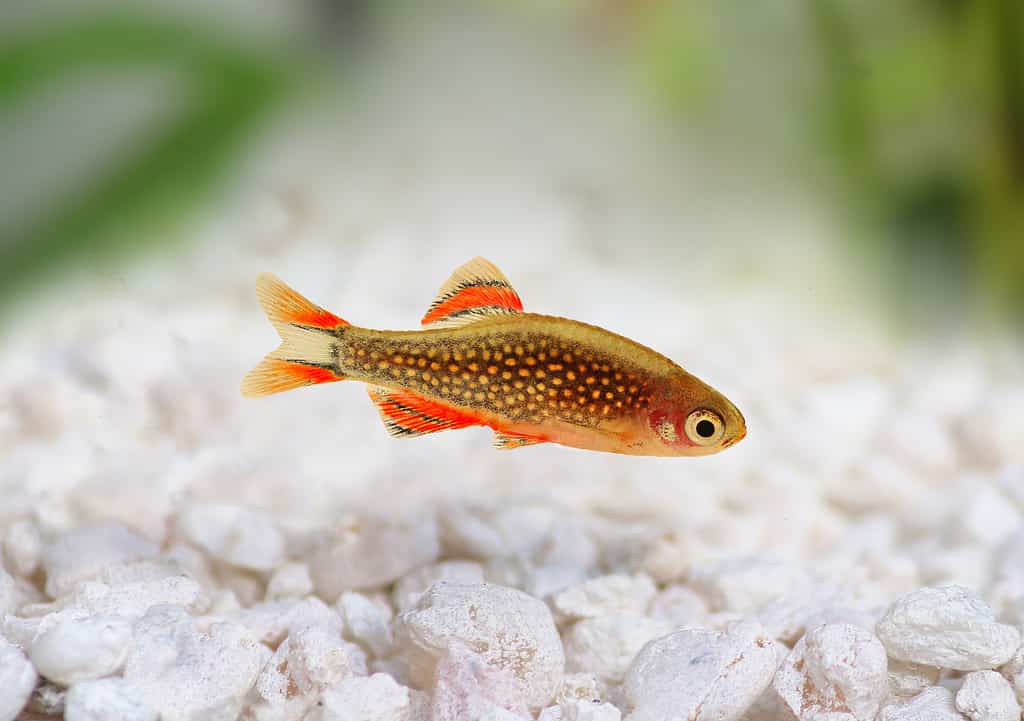
The scales on this danio fish are quite small compared to that of species like the arapaima, which has the largest scales.
©Mirko_Rosenau/ via Getty Images
Fish are among the most diverse animals on the planet. More than 30,000 unique species currently exist today! As a result, their smooth yet scaly skin can vary significantly in color, scalation, shape, and even function.
Like the scales of snakes, fish scales are essential not only for protection but movement in water. Their scales are made of thin plates of bone. Interestingly, the fish with the largest scales is the arapaima, a massive freshwater fish that can grow to be over 400 pounds and 10 feet long!
10. Insects
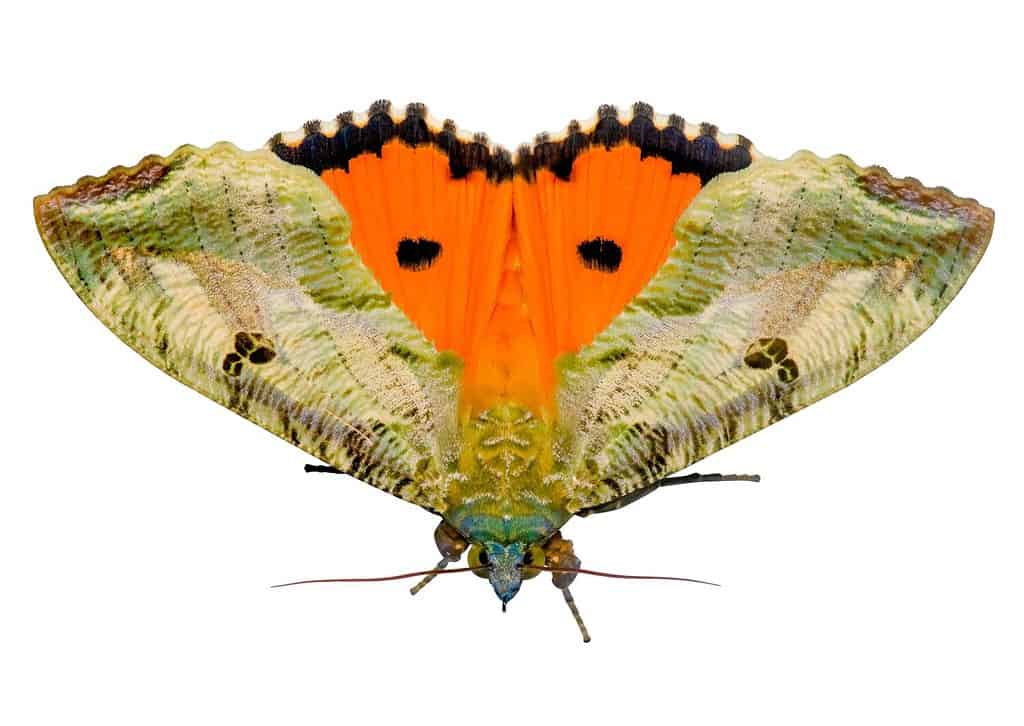
Most moths and butterflies have skin on their wings, heads, and abdomens.
©Goodly Pixels/Shutterstock.com
The skin of many varieties of insects is also very scaly! Most notably, scales are present on the skin of moths and butterflies. These animals have scales not only on their wings and heads but also along the midsection, or thorax, and even parts of their genitalia.
In addition to moths and butterflies, a group of insects called caddisflies possess scales. Many species of skin and carpet beetles within the taxonomic family Dermestidae can also have scales.
11. Marine Worms

Certain types of marine worms can have elytra or shield-like scales.
©Rattiya Thongdumhyu/Shutterstock.com
The vast majority of worms have smooth, scaleless bodies. However, a select few, such as many types of marine worms like the aptly-named scale worm, can have scales! These bizarre animals have small scales on their backs known as dorsal scales. These tiny, flatworms can grow up to 20 centimeters in length, though most are just a few centimeters long.
The bodies of scale worms are covered in a particular type of shield-like scale called elytra.
12. Spiders

Jumping spiders have lots of tiny, iridescent, hair-like scales covering their bodies.
©Brett Hondow/Shutterstock.com
Finally, we’ll cap off our list with spiders, another animal most of us wouldn’t expect to have scales. To be clear, not all spiders have scales–only certain types, such as salticids, better known as jumping spiders.
The scales of these spiders are quite rigid and densely packed. These tiny scales are iridescent and almost hair-like in appearance, and they are made of chitin. Interestingly, more than 5,800 species of jumping spiders exist.
The photo featured at the top of this post is © Claudia Nass/ via Getty Images
Thank you for reading! Have some feedback for us? Contact the AZ Animals editorial team.






